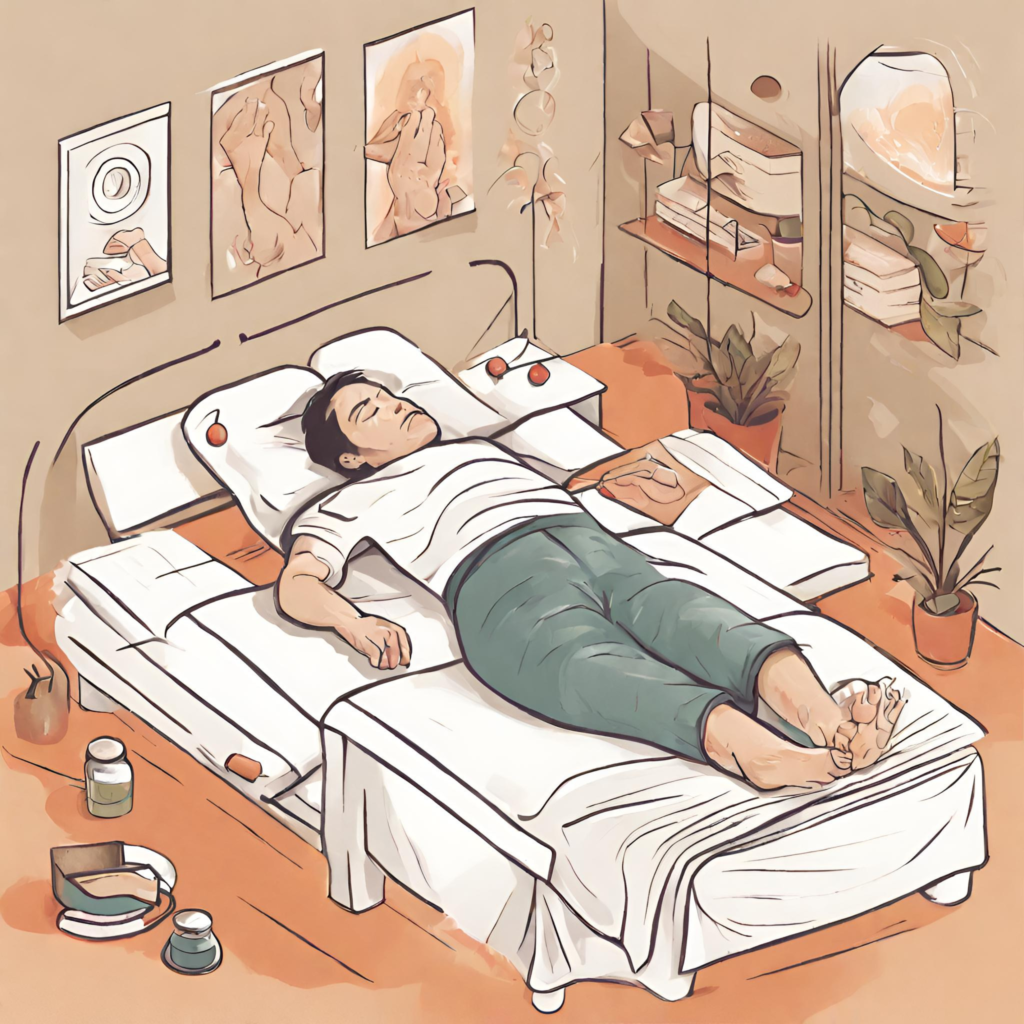Exploring natural ways to improve relaxation and sleep, acupressure for improved napping is emerging as a notable technique. Rooted in ancient practices and gaining traction in modern wellness routines, acupressure offers a distinct approach to enhancing nap quality. This article explores how acupressure, often overshadowed by acupuncture, can be instrumental in achieving more restful and rejuvenating naps.
Understanding Acupressure’s Role in Relaxation and Napping
Acupressure is a traditional Chinese medicine technique akin to acupuncture but without needles. It involves applying pressure to specific points on the body using fingers or hands. These points, known as acupressure points or meridians, correspond to different body organs and systems. Stimulating these points through acupressure techniques for better naps is believed to release tension, improve circulation, and enhance the body’s life force energy, Qi, thereby promoting well-being and relaxation.
The Science Behind Acupressure and Enhanced Sleep Quality
Acupressure’s foundations in Eastern medicine are now being illuminated by scientific research highlighting its sleep benefits. Studies indicate that acupressure can calm the nervous system and reduce stress and anxiety – major factors affecting sleep quality. By activating natural relaxation responses, acupressure facilitates quicker and deeper sleep onset, making it an ideal practice before napping, thus enhancing sleep quality with acupressure.
Key Acupressure Points for More Restful Naps
To maximize nap quality through acupressure, certain points are especially effective:
- Anmian (Peaceful Sleep Point): Located near the ear, this point is known for inducing calm and promoting better sleep.
- Yin Tang (The Third Eye): Found between the eyebrows, stimulating this point is said to alleviate stress and quieten the mind.
- Shen Men (Heaven’s Gate): Situated on the upper shell of the ear, this point is often used for anxiety relief and relaxation.
- Neiguan (Inner Gate): Located on the inner forearm near the wrist, this point helps alleviate restlessness and induces deep relaxation.
- Spirit Gate (Heart 7): Positioned on the wrist’s crease, this point is believed to calm the mind and balance emotions.
Massaging these points before napping can significantly aid in relaxation and improve the quality of sleep, aligning with the goal of natural napping enhancement with acupressure.

Incorporating Acupressure into Your Nap Routine
Adding acupressure to your napping routine is simple and effective. Here’s how to get started:
- Find a Quiet Space: Choose a peaceful area where you can relax without interruptions.
- Apply Pressure: Use your finger or thumb to apply gentle yet firm pressure to one of the above acupressure points.
- Duration: Hold each point for 1-3 minutes, focusing on deep and even breathing.
- Create a Calming Atmosphere: Enhance the effectiveness of your acupressure session with a comfortable setting, dim lighting, and minimal distractions.
Personalizing your approach, such as focusing on acupressure points for restful napping that resonate specifically with you, can further enhance the benefits.
Personalizing Your Acupressure Experience for Enhanced Napping
The effectiveness of acupressure is greatly enhanced when it is personalized to individual needs. Everyone’s response to acupressure can differ, making it crucial to explore various techniques. For instance, while some may find immediate relaxation with the Anmian point, others might resonate more with the calming effects of the Yin Tang. Adapting acupressure techniques for better naps involves listening to your body and adjusting the pressure and duration to suit your comfort levels.
Long-term Benefits of Acupressure in Napping Routines
Integrating acupressure into your daily napping routine can lead to significant, long-term benefits. Regular stimulation of acupressure points can enhance overall sleep quality, leading to deeper and more rejuvenating rest. Additionally, consistent acupressure sessions can help in managing stress and anxiety levels, contributing to a more balanced emotional state. Over time, this practice can foster improved mental clarity, making relaxation and falling asleep easier, thereby enhancing the overall quality of your naps with natural napping enhancement with acupressure.

Addressing Common Concerns in Acupressure Practice
When beginning with acupressure, it’s common to have questions or concerns, particularly regarding the intensity of pressure. It’s recommended to start gently and gradually increase as needed. The pressure should be firm but not painful. Also, focusing on relaxation and deep breathing during the process is important to maximize the benefits of relaxation and napping with acupressure.
Another frequent query is the duration of acupressure. Generally, holding each point for 1-3 minutes is effective, but this can vary based on personal comfort and response. It’s best to listen to your body and adjust accordingly.
Conclusion: Unlocking the Power of Acupressure for Restful Naps
Acupressure presents a unique and natural way to improve the quality of naps. By applying pressure to specific body points, this technique can help release tension, promote relaxation, and improve sleep quality. Whether you’re looking to calm your mind before a quick nap or seeking a deeper state of relaxation, acupressure can be a valuable tool in your wellness arsenal. With regular practice, personalized techniques, and a focus on relaxation, acupressure can significantly contribute to more restful and rejuvenating naps.
FAQs: Enhancing Your Napping Experience with Acupressure
To assist you further in your acupressure journey, here are answers to some frequently asked questions:
Yes, acupressure is well-suited for self-administration, making it a convenient method for enhancing sleep quality with acupressure.
Performing acupressure just before your nap is ideal, as it helps prepare your body and mind for rest.
Acupressure is generally safe with few known side effects. However, it should be performed gently, especially on sensitive areas.
No special training is required for basic acupressure techniques, making it accessible for anyone looking to improve nap experiences with crystal therapy.


